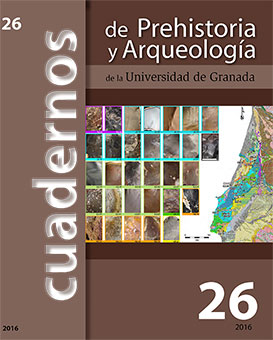THE FLINT OF THE PREBETICO OF ALICANTE: TYPES, VARIABILITY AND PLEISTOCENE CATCHMENT AND KAPPING AREAS
Main Article Content
Abstract
In this paper we offer a summary of the results of the surveys conducted in geoarchaeological Prebético Alicante (eastern part of the Betic). In this geological area have been documented 12 types of silicifications ranging from the Jurassic to the Mio-Pliocene. The various processes of erosion and transport that have affected each type of chert and the impact that this entails in the increased variability of each type were analyzed. This has been taken into account when creating the regional lithoteque, using samples from multiple geological contexts. Finally, the employment of local chert during the Pleistocene is clearly demonstrated from the high activity of carving preserved in Pleistocene colluvial or alluvial formations in the vicinity of the source type areas, as well as the study of certain arqueoestratigráficas sequences.



